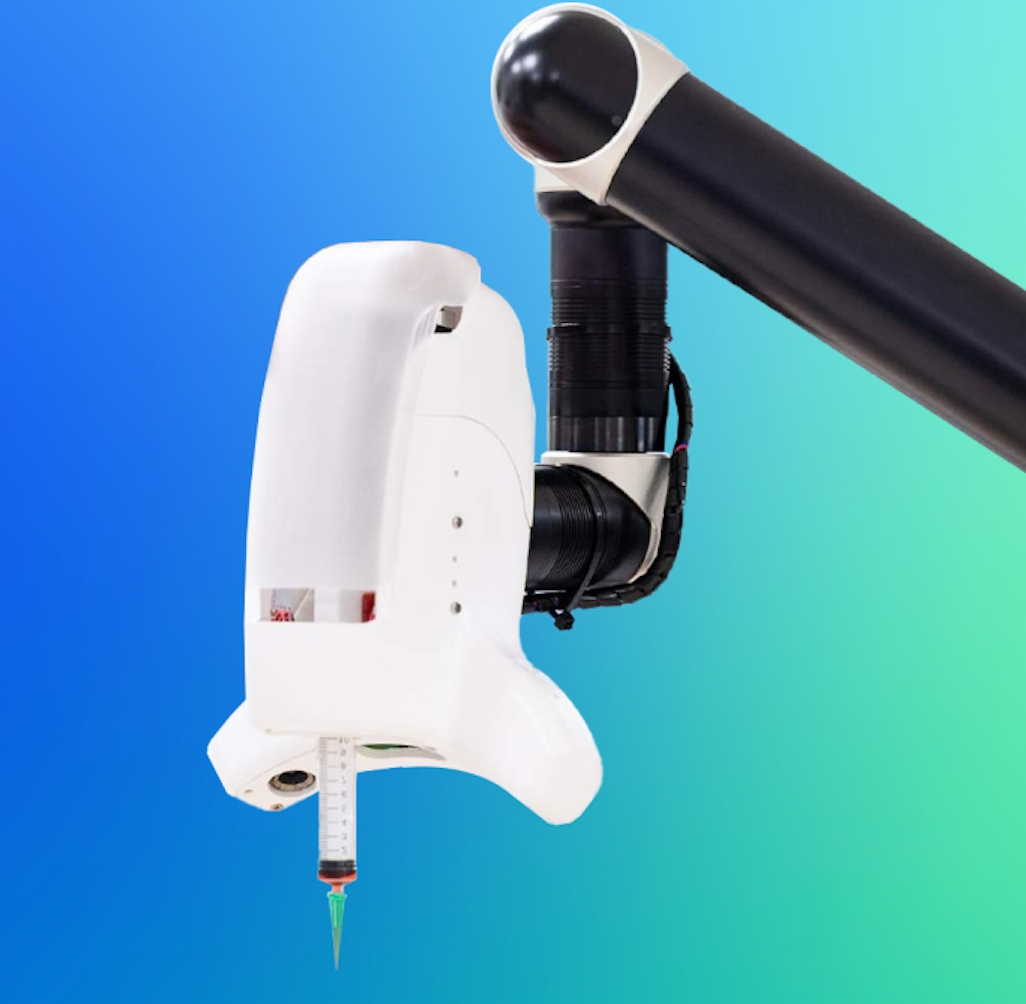Catalog
Search
436 products
View:
- Selected: 1Areas of use
- Selected: 0Item names
- Selected: 0Manufacturer
- Selected: 0Made in
- Selected: 0Additional
View:
436 products
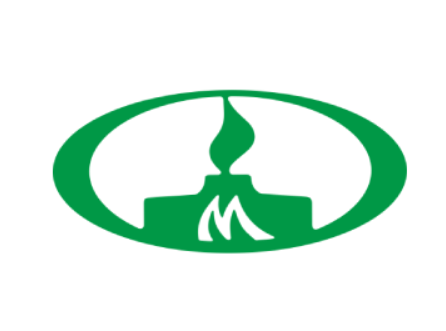
Vacuum tube MiniMed with K3-EDTA and separation gel, 9 ml, 16×100mm, purple, PET, pack.100 pcs
from
1 710 ₽
The potassium salt of ethylenediaminetetraacetic acid (EDTA) is the preferred anticoagulant for hematological studies. Gel is a special material designed to form a stable barrier between the cellular components of blood and serum during centrifugation.
Material for research............... EDTA-blood, plasma
Scope of application............................ hematological examination of whole blood
MiniMed
Suponevo
Produced in: Bryansk region
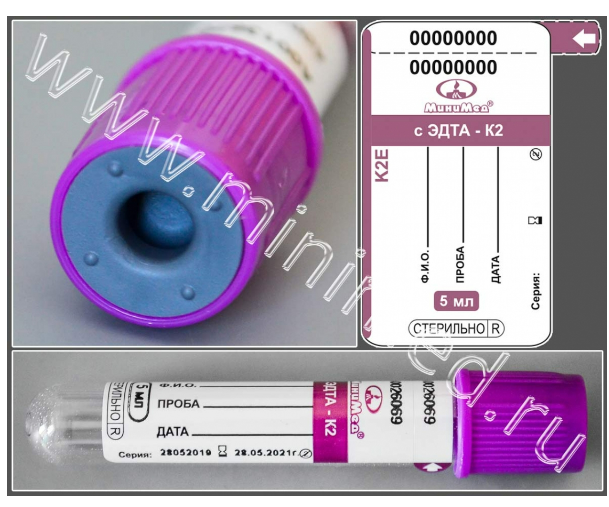
Vacuum tube MiniMed with K2-EDTA,, 5 ml, 13×75mm, purple, PET, pack.100 pcs
from
627 ₽
The potassium salt of ethylenediaminetetraacetic acid (EDTA) is the preferred anticoagulant for hematological studies.
Material for research............... stabilized EDTA whole blood /EDTA plasma.
MiniMed
Suponevo
Produced in: Bryansk region
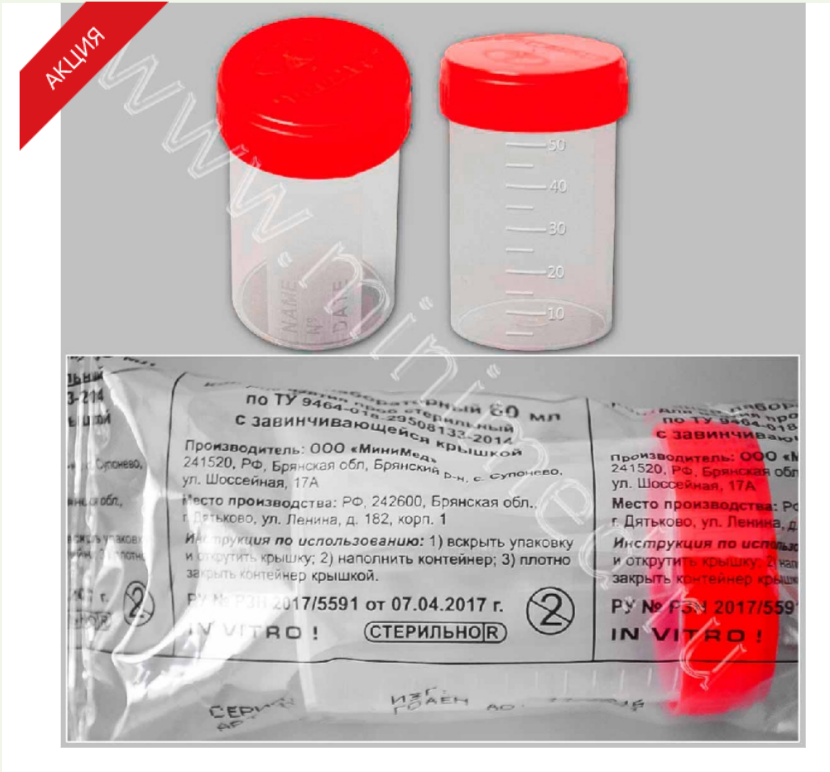
Laboratory container for sampling sterile 60 ml with screw. roof., n/a, ind.pack./box.400 pcs.,
from
1 960 ₽
Provides complete tightness during transportation of biological material. The container material is polypropylene, the lid is polyethylene. It has a graduated and frosted window for recording. Sterile.
MiniMed
Suponevo
Produced in: Bryansk region
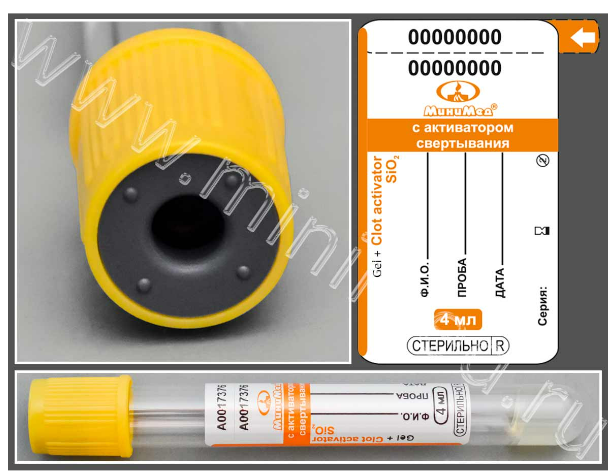
Vacuum tube MiniMed with coagulation activator and separation gel, 4ml,13*100 mm, yellow-orange, PET,pack.100,
from
902 ₽
Test tubes are used for blood sampling in biochemistry and immunology. During centrifugation, the gel forms a strong barrier for 48 hours between the clot and the serum. The gel tubes must be centrifuged no later than 2 hours after blood collection.
Material for research............... blood serum
Scope of application............................ serum research in biochemistry, immunology
Centrifugation.............................. 1500-2000 g - 10 minutes
MiniMed
Suponevo
Produced in: Bryansk region
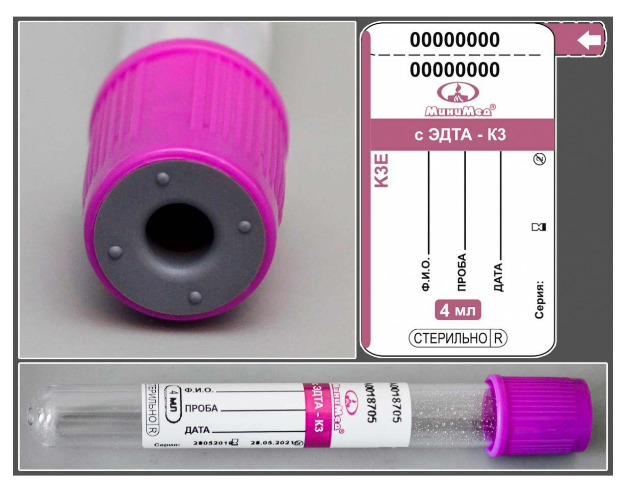
Vacuum tube MiniMed with K3-EDTA, 4 ml, 13×100mm, purple, glass, pack.100 pcs
from
1 235 ₽
The potassium salt of ethylenediaminetetraacetic acid (EDTA) is the preferred anticoagulant for hematological studies.
Material for research............... EDTA-blood, plasma
Scope of application............................ hematological examination of whole blood
MiniMed
Suponevo
Produced in: Bryansk region
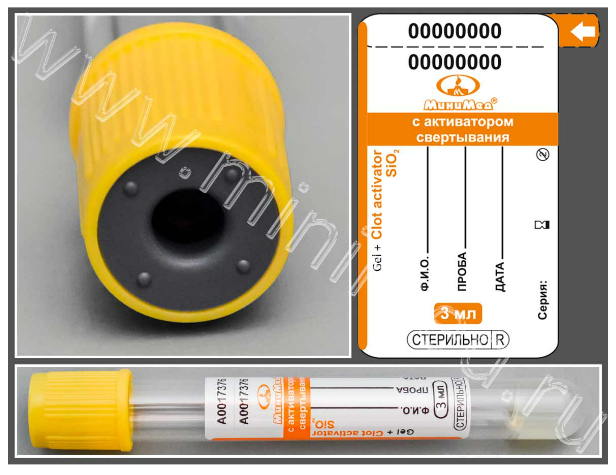
Vacuum tube MiniMed with coagulation activator and separation gel, 3ml,13*100 mm, yellow-orange, PET,pack.100
from
1 250 ₽
Test tubes are used for blood sampling in biochemistry and immunology. During centrifugation, the gel forms a strong barrier for 48 hours between the clot and the serum. The gel tubes must be centrifuged no later than 2 hours after blood collection.
Material for research............... blood serum
Scope of application............................ serum research in biochemistry, immunology
Centrifugation.............................. 1500-2000 g - 10 minutes
MiniMed
Suponevo
Produced in: Bryansk region
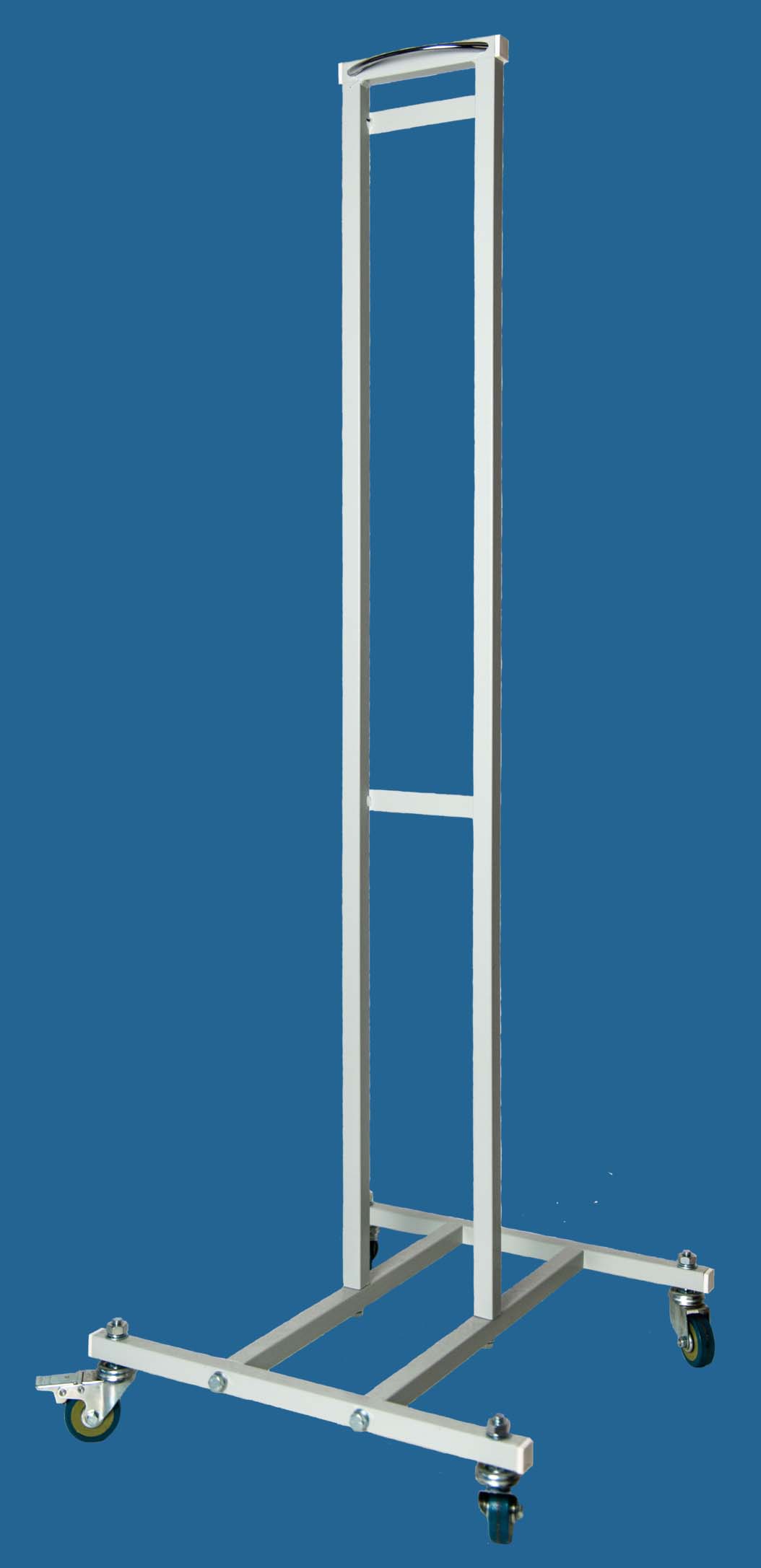
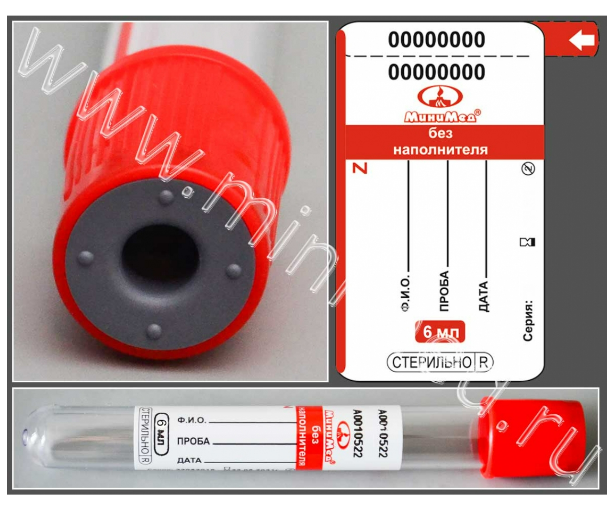
Vacuum tube MiniMed without filler, 6 ml, 13×100 mm, red, PET, pack.100 pcs,
from
679 ₽
Tubes without fillers are used for the study of blood serum in biochemical, immunological and serological tests.
Material for research............... blood serum
Scope of application............................ blood serum research in biochemistry, immunology, serology
Centrifugation................................ 1000 - 1500 g - 10 minutes
MiniMed
Suponevo
Produced in: Bryansk region
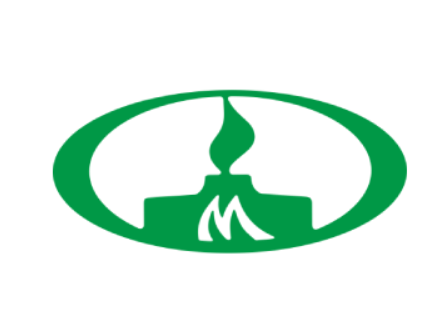
Vacuum tube MiniMed with K2-EDTA and separation gel, 9 ml, 16×100mm, purple, PET, pack.100 pcs.
from
1 710 ₽
The potassium salt of ethylenediaminetetraacetic acid (EDTA) is the preferred anticoagulant for hematological studies. Gel is a special material designed to form a stable barrier between the cellular components of blood and serum during centrifugation.
Material for research............... EDTA-blood, plasma
Scope of application............................ hematological examination of whole blood
MiniMed
Suponevo
Produced in: Bryansk region
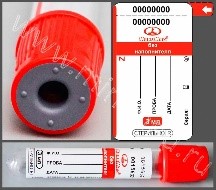
Vacuum tube MiniMed without filler, 3 ml, 13×75 mm, red, glass, pack.100 pcs
from
1 143 ₽
Tubes without fillers are used for the study of blood serum in biochemical, immunological and serological tests.
Material for research............... blood serum
Scope of application............................ blood serum research in biochemistry, immunology, serology
Centrifugation................................ 1000 - 1500 g - 10 minutes
MiniMed
Suponevo
Produced in: Bryansk region
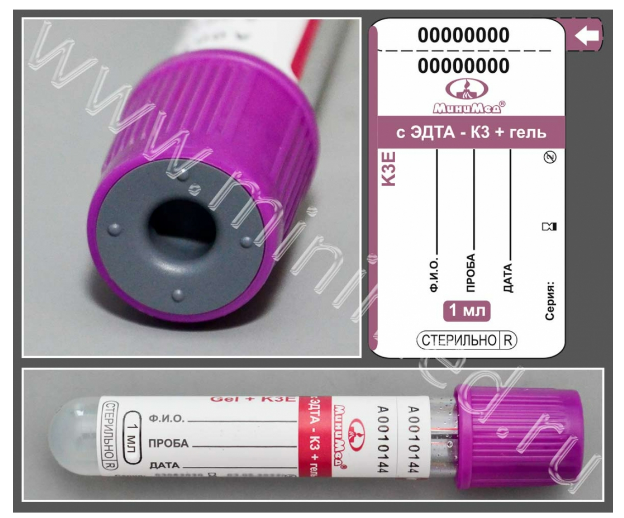
Vacuum tube MiniMed with K3-EDTA and separation gel, 1ml, 13×75mm, purple, glass, pack.100 pcs
from
1 592 ₽
The potassium salt of ethylenediaminetetraacetic acid (EDTA) is the preferred anticoagulant for hematological studies. Gel is a special material designed to form a stable barrier between the cellular components of blood and serum during centrifugation.
Material for research............... EDTA-blood, plasma
Scope of application............................ hematological examination of whole blood
MiniMed
Suponevo
Produced in: Bryansk region
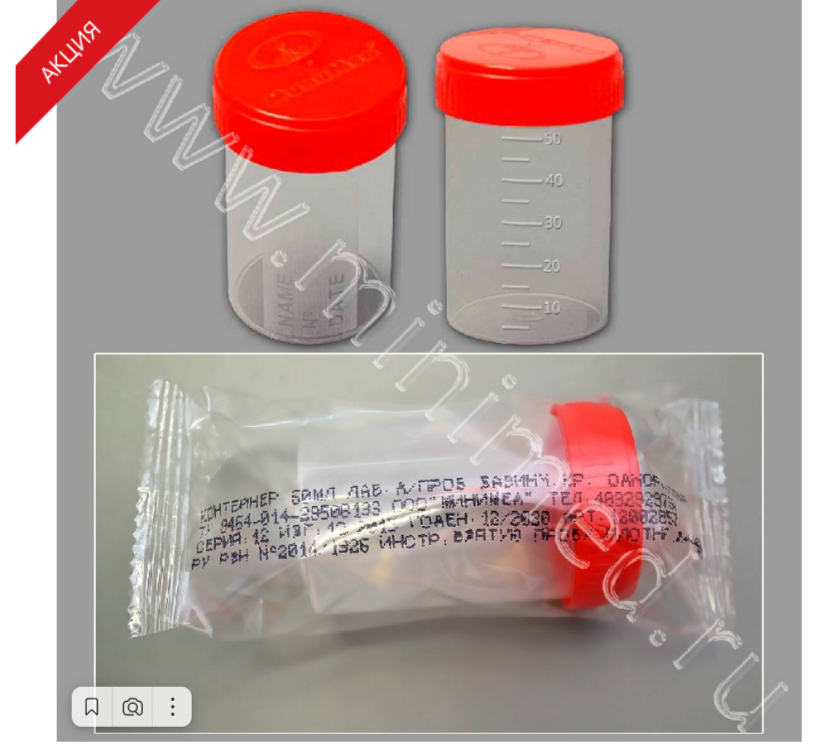
Laboratory container for sampling according to TU 9464-014-29508133-2013, 60 ml with screw. roof., n/ster., p/p, ind.pack. /pack.50 pcs. /box.400pcs, MiniMed
from
245 ₽
Provides complete tightness during transportation of biological material. The container material is polypropylene, the lid is polyethylene. It has a graduated and frosted window for recording. Non-sterile.
MiniMed
Suponevo
Produced in: Bryansk region
